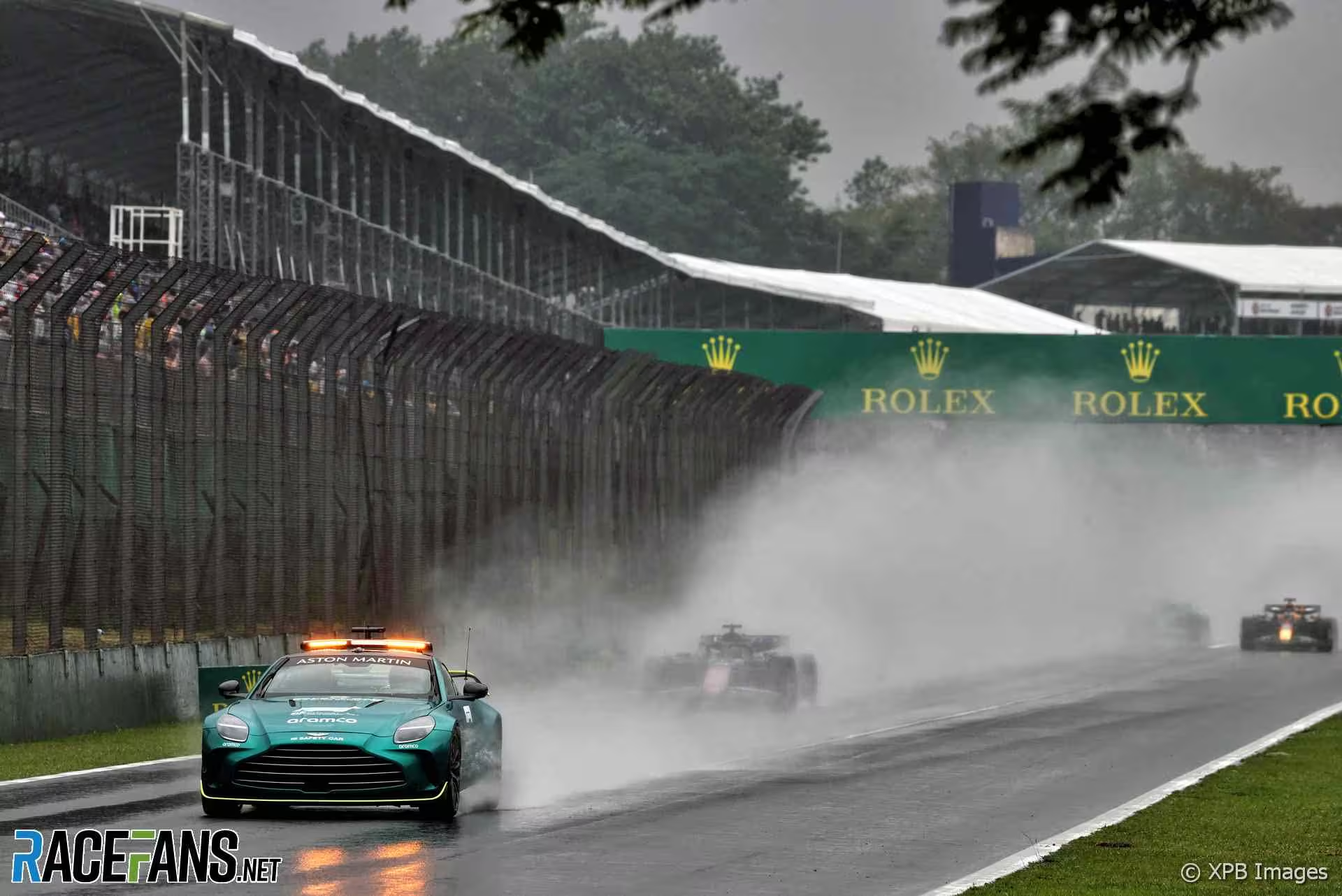When Formula 1 abandoned efforts to hold qualifying for its grand prix on Saturday afternoon at Sao Paulo, Lewis Hamilton decided to make a point to the series’ CEO, Stefano Domenicali.
“You should have sent us out,” the seven-times world champion chided the Liberty Media chief. “It’s ridiculous, we should go out. I want to go out. If you give us better wet tyres and [tyre] blankets, we’ll be able to run in this.”
F1 drivers have criticised the performance of the series’ wet weather tyres for years, specifically the full wet weather tyre used when conditions are at their worst. But Hamilton’s criticism only addressed part of the reason why the session had to be delayed until the following day.
“The decision was taken not to proceed with qualifying due to poor visibility, standing water on the track and fading light,” said the FIA and F1 in a joint statement on Saturday afternoon. Visibility – not tyre performance – was the overriding concern.
Along with the postponement of qualifying, the FIA and FOM took a decision which is virtually unprecedented in modern F1: They moved the start time of the race forward. We have seen races delayed for rain many times, but proactively bringing a start forward to avoid an anticipated downpour was a rare move, and the correct one. It showed a lesson was learned from the farcical 2021 Belgian Grand Prix.
But the key problem remains that current F1 cars do not race well in the rain. Aquaplaning in deep water is part of the problem, but so is the plumes of spray thrown up by each passing car which make visibility progressively worse for each that passes by. This has always been a problem, but it has worsened in recent years, for two reasons.
First, F1 introduced wider tyres in 2017. This was a significant change: The front and rear wheels became almost 25% wider. The total tyre width for a single F1 car rose from 1,140mm to 1,420mm. With more treaded rubber on the track’s surface, the volume of water being lifted into each car therefore increased.
Advert | Become a RaceFans supporter and
The second significant change came in 2022, when F1 overhauled its technical regulations giving teams greater freedom to use the flow of air beneath their cars to generate downforce. But a consequence of this is the larger ‘tunnels’ and diffusers draw up even more water from the track surface and fling it into the air behind as they pass.
This is partly why the FIA’s attempt to address…
Click Here to Read the Full Original Article at RaceFans…

